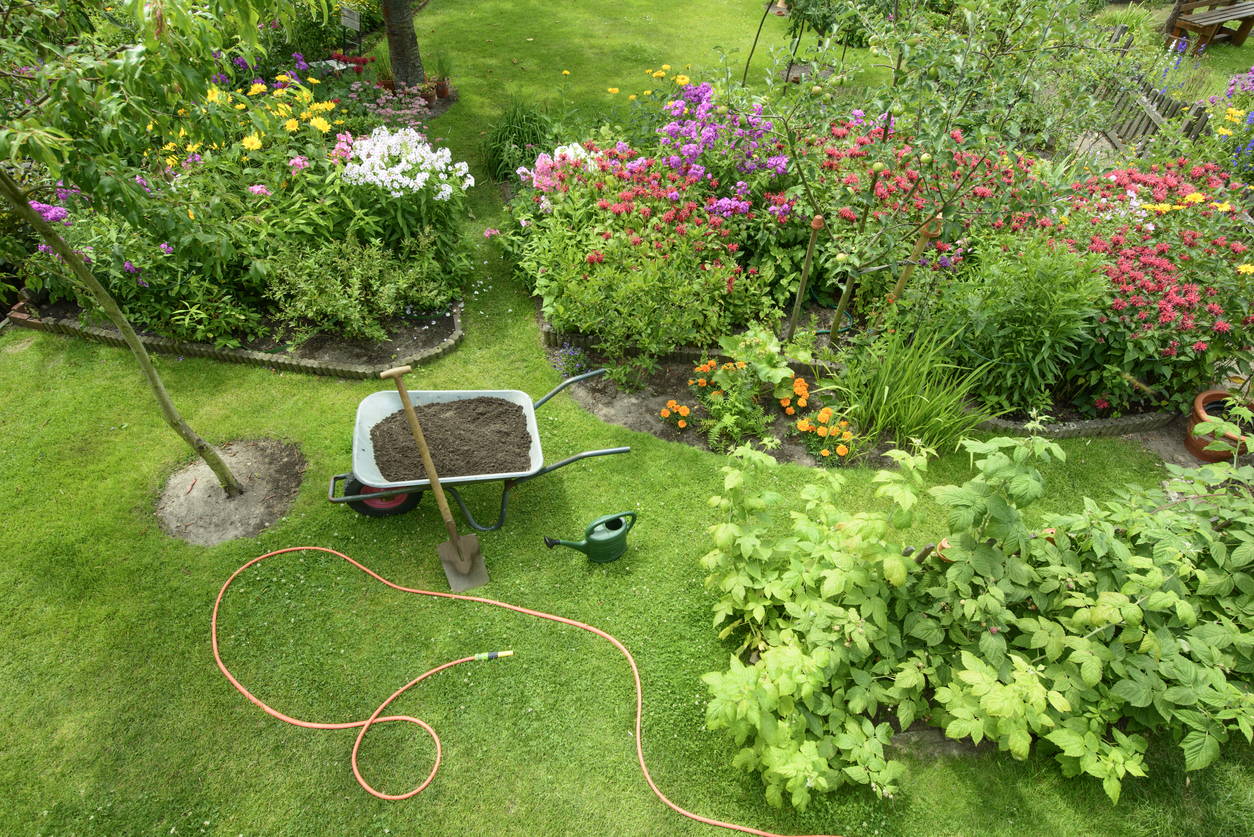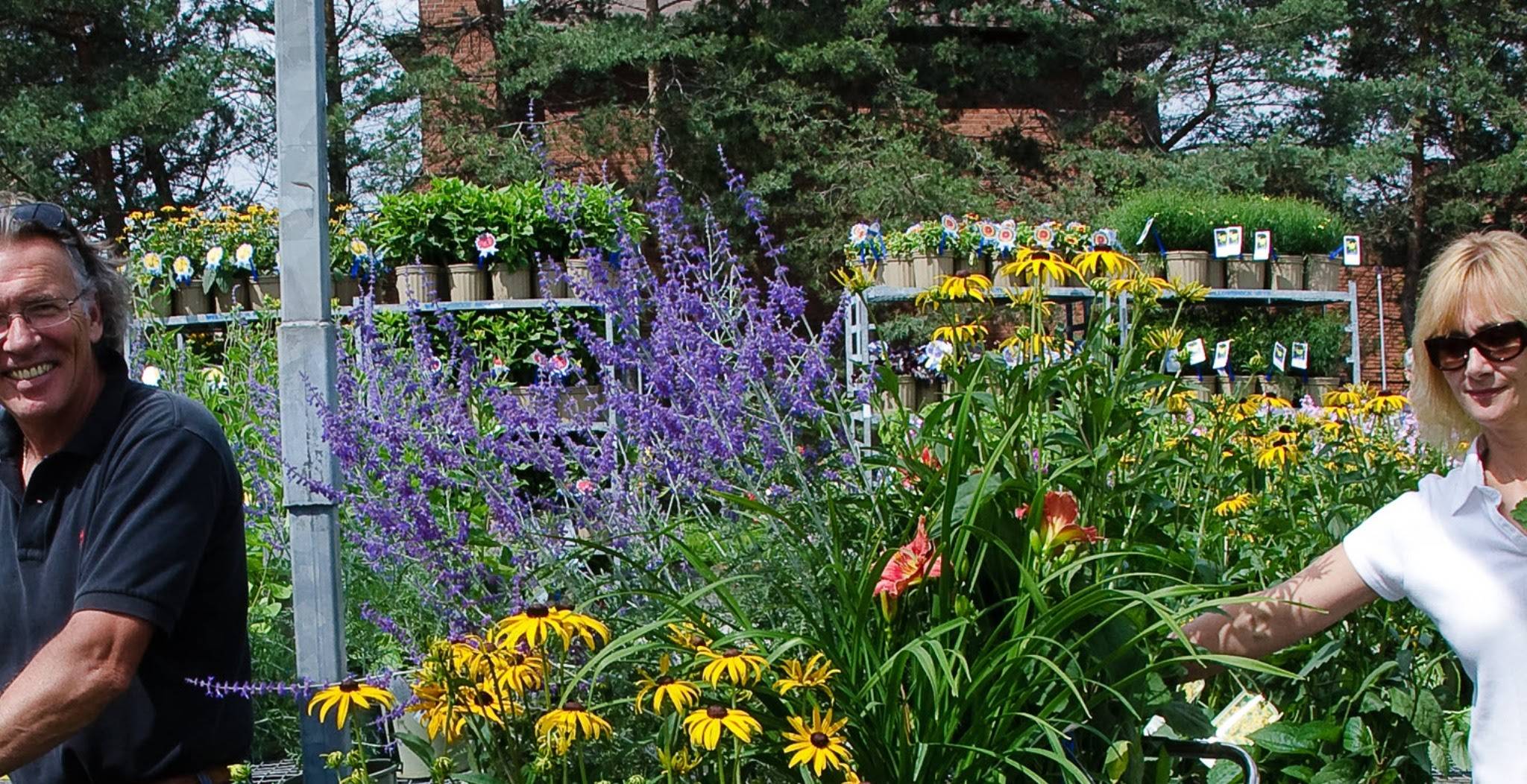Are your garden plants a bunch of drug addicts?
By no means do we seek to make light of the seriousness of drug addiction, but the lessons we can learn from the human experience can also be applied to raising and caring for your plants.
If you cultivate an environment in which your plants become dependent on agrochemicals, they will lose the capacity to grow and thrive (and in some cases…even survive) without a regular “fix”.
Why have we become so dependent upon agrochemical fertilizers and pesticides?
The treatment of suburban soils, especially during the development phase of homes, schools, commercial buildings, roads etc., creates a chain reaction of soil degradation that disrupts the natural world.
What starts the chain reaction of soil depletion in our cities and towns?
- Developers of a new site will first remove the healthy topsoil (the top 13-25 cm of nutrient rich soil with the highest concentration of soil organic matter), and then leave exposed the subsoil (the soil below the topsoil that is relatively barren in terms of organic matter and organisms).
- The exposed subsoil is then pulverized and compacted by heavy equipment as stages of construction unfold.
- When construction is complete, the heavily damaged topsoil (stored in compacted, dry berms on the site) is reintroduced as a thin top-dressing just before sod is rolled out.
- A strong dose of synthetic fertilizer is then introduced to the depleted soil to facilitate the 1st plantings of trees, sod, and landscape plants.
- The salt-based chemical fertilizers initially sustain the plants, but they further impact the soil’s recovery by killing off the communities of soil microbes (the foundation of living, productive soil). It should also be noted that, even when recommended fertilizers are used in depleted soil, the failure rate of newly planted trees, bushes, and other plantings can remain stubbornly high - and costly.
- Because the soil microbiome has been sidelined by construction and applications of synthetic fertilizers, a cycle of dependence on more fertilizer applications is set in motion. This ‘addiction to synthetics’ takes hold on large commercial and municipal landscapes - and in our own yards.
- We create an environment in which our plantings depend on a regular fix of agrochemicals just to survive

What’s the alternative?
The most effective way to break the cycle of drug addicted plants is to rebuild and nurture soil microbial communities. And the most effective way to do that is by Introducing Mycorrhizal Fungi to the soil (especially on planting day).
Mycorrhizal Fungi (MF) are a family of specialized fungi that form a symbiotic relationship with the root systems of most plants. The plants feed the Mycorrhizae excess carbohydrates (which are a natural by-product of photosynthesis) and in return, the Mycorrhizae amplifies the plant root’s capacity to source nutrients and water. They also help protect plant roots from threats such as insects, disease and drought.
Together, the plant and its Mycorrhizal partners grow and thrive together.
How is the cycle broken?
Mycorrhizal Fungi help break the cycle of chemical dependence in two ways:
First, the presence of Mycorrhizae helps to sustain plantings in depleted soils (the soil typically found in urban/suburban settings). Mycorrhizae help newly installed plants to overcome a frequent and costly malady: Transplant Shock.
Second, because the introduction of Mycorrhizae reduces (and potentially eliminates) the use of agrochemicals, over time, the soil environment begins to rebuild, and is ultimately restored to a healthy, productive state.
The final benefit of breaking your garden’s dependence on synthetics is now realized; gardens and landscapes become sustainable spaces. Your landscapes become durable, self-reliant, beautiful ecosystems - just like a forest.
The bigger picture:
It would be wrong to suggest that agrochemical products are a negative force in the world. The truth is, they are a powerful tool for cultivating crops, increasing yields, and feeding the world’s population.
But, considering the damage humankind inflicts on the natural environment, it is becoming increasingly necessary for all of us to learn ways in which we can contribute to environmental protection and restoration. With new organic technologies, we can grow healthy crops and landscapes without causing the widespread collateral damage that synthetics cause to our shared ecosystem.
Where can you make a difference? Your home garden is a good place to start.
Break the cycle. Don’t be an enabler!
Learn more about how Root Rescue restores damaged urban soils.

